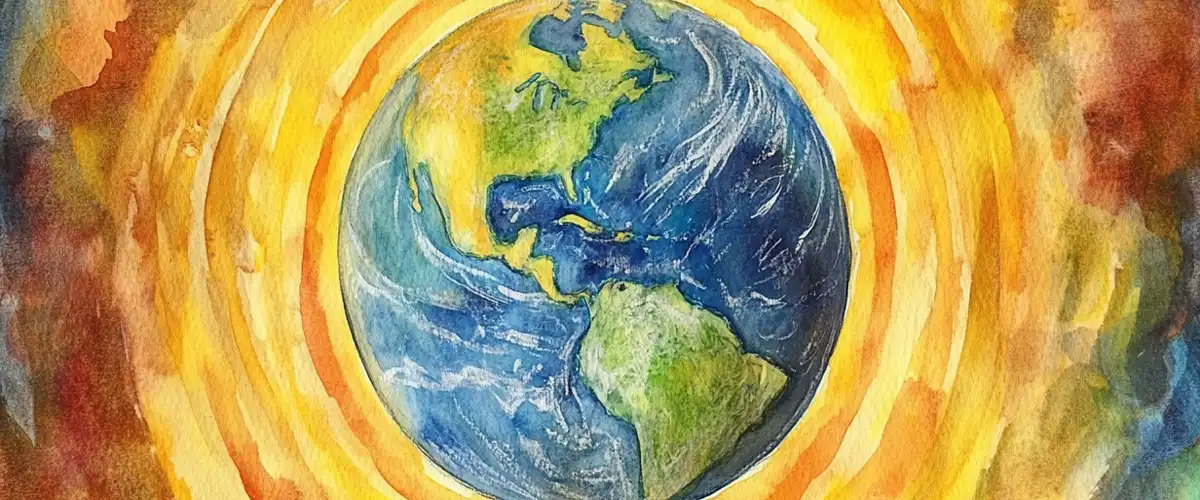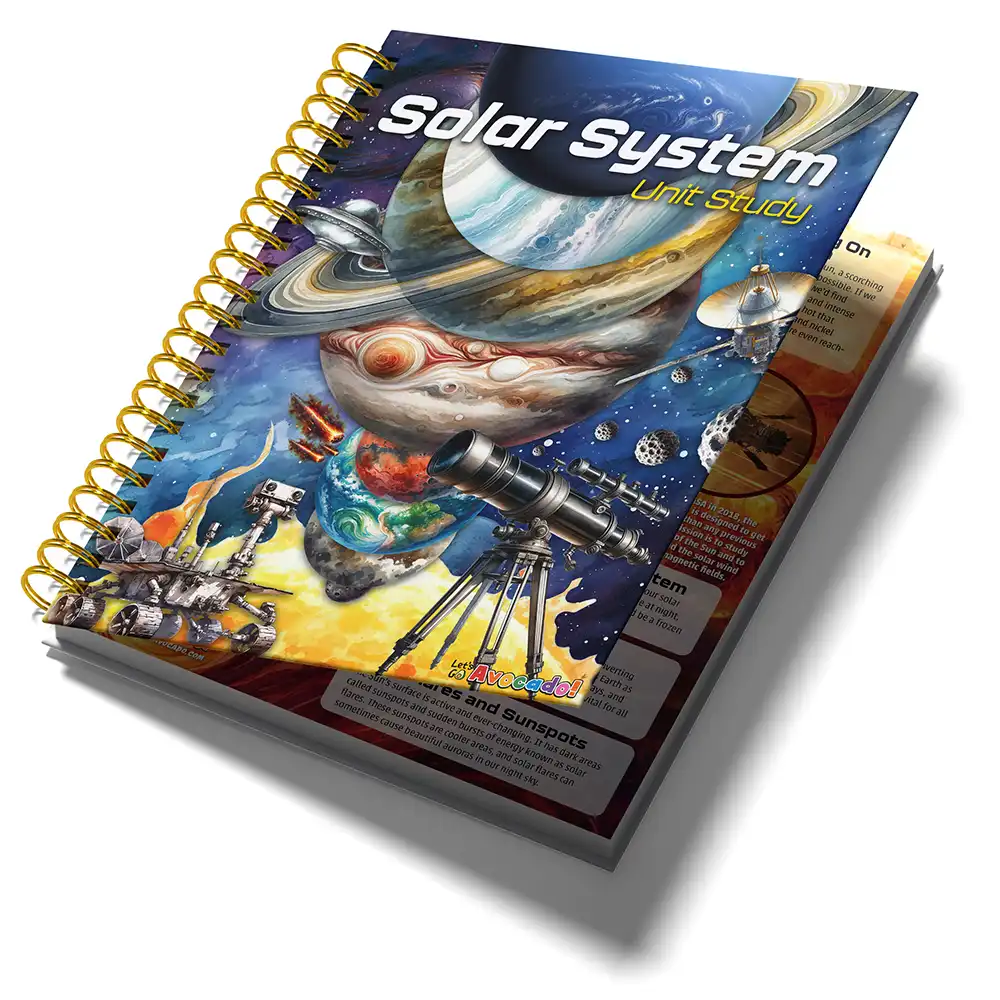This page may contain affiliate links.
Read our disclosure and privacy policy here.
Have you ever used a compass and wondered why the needle always points north? Or seen pictures of the amazing Northern Lights? These cool things happen because of something called the Earth’s magnetic field. It’s an invisible force that surrounds our planet, acting like a giant shield. Even though we can’t see it, the magnetic field is always there, protecting us from harmful things from space and helping us find our way. In this article, we’re going to explore what the Earth’s magnetic field is, how it works, and why it’s so important for life on Earth. Let’s dive in and discover this amazing natural force!
Table of Contents
Understanding Earth’s Magnetic Field: A Guide for Kids
What is Earth's Magnetic Field?
The Earth has an invisible force around it called the magnetic field. You can’t see it, but it’s there, just like how you can’t see the wind but know it’s blowing. The magnetic field acts like a giant magnet with two poles—a North Pole and a South Pole. This magnetic field is like a bubble that surrounds our planet, extending far out into space. It’s strongest near the poles and weaker as you move towards the equatorThe equator is an imaginary line around the middle of the Earth that divides it into the Northern and Southern Hemispheres. It’s the warmest part of the Earth because it’s closest to the sun., which is right in the middle between the north and south poles.
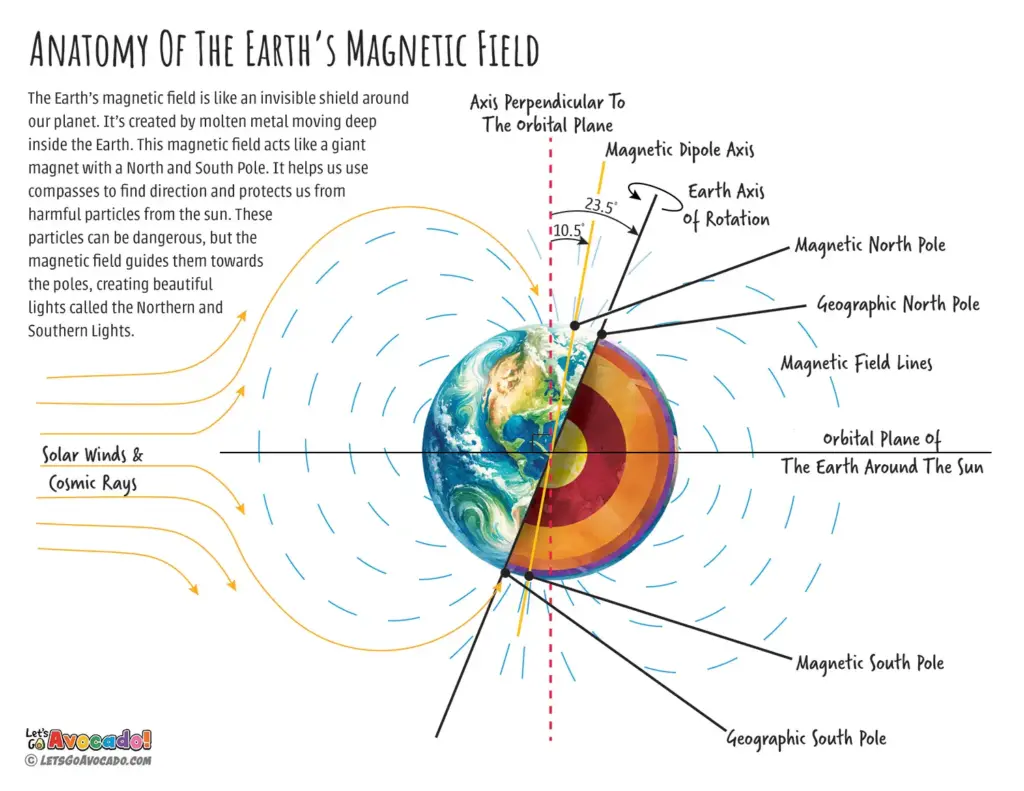
The Earth’s magnetic field is like an invisible shield around our planet. It’s created by molten metal moving deep inside the Earth. This magnetic field acts like a giant magnet with a North and South Pole. It helps us use compasses to find direction and protects us from harmful particles from the sun. These particles can be dangerous, but the magnetic field guides them towards the poles, creating beautiful lights called the Northern and Southern Lights.
Imagine vertical line perpendicular (at right angles) to the orbital plane of the Earth around the sun (the path that the earth takes around the sun). In the illustration above, this imaginary vertical line is in red.
The Earth’s magnetic field is like a giant magnet, and it’s axis, called the Magnetic Dipole AxisThe Magnetic Dipole Axis is an imaginary line that runs through the Earth from the magnetic North Pole to the magnetic South Pole. It’s like the line you would draw through a bar magnet to connect its north and south ends. This axis helps us understand how the Earth’s magnetic field is shaped and where the magnetic poles are located., is tilted about 10 to 11 degrees compared to the vertical line through the center of the Earth. The top of this axis is called Magnetic North, and the bottom is called Magnetic South.
The Earth also spins around itself, which gives us our days and nights. The axis of this spin is about 23.5 degrees from the vertical line. The top of this axis is called Geographic North, and the bottom is called Geographic South. These are the areas we usually call the North Pole and the South Pole.
This means the Magnetic North and South Poles aren’t in the same places as the Geographic North and South Poles.
When solar wind and cosmic rays from space hit the Earth’s magnetic field, they are guided towards the poles. At the poles, these particles can enter the atmosphere and create colorful lights called the auroras, or Northern and Southern Lights.
How Do We Know It's There?
We know the Earth’s magnetic field exists because it affects things in our world in noticeable ways. For example, certain rocks contain minerals like magnetite, which become magnetized over time. These rocks can align with the Earth’s magnetic field, pointing towards the magnetic poles.
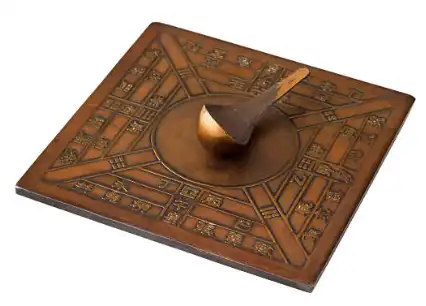
Ancient navigators noticed that these magnetic rocks, called lodestones, always pointed in the same direction, indicating the presence of a magnetic field. In ancient China, a spoon made from lodestone was placed on a bronze base. It was perfectly balanced and the spoon would align with the magnetic field of the earth. This was one of the earliest compasses.
Scientists also observed that the Northern Lights (auroras) happen near the poles, where the magnetic field guides charged particles from the sun into the atmosphere. These observations helped early scientists understand that the Earth has a magnetic field. Compasses were invented later, taking advantage of this magnetic field to help people find directions.
How Is Earth's Magnetic Field Created?
The Earth’s magnetic field is created deep inside the planet. The Earth has different layers, like an onion. At the center, there is a solid inner core made mostly of iron and nickel. Surrounding it is the outer core, which is made of molten (liquid) iron and nickel. You can see the Earth’s layers in more detail in the illustration below.
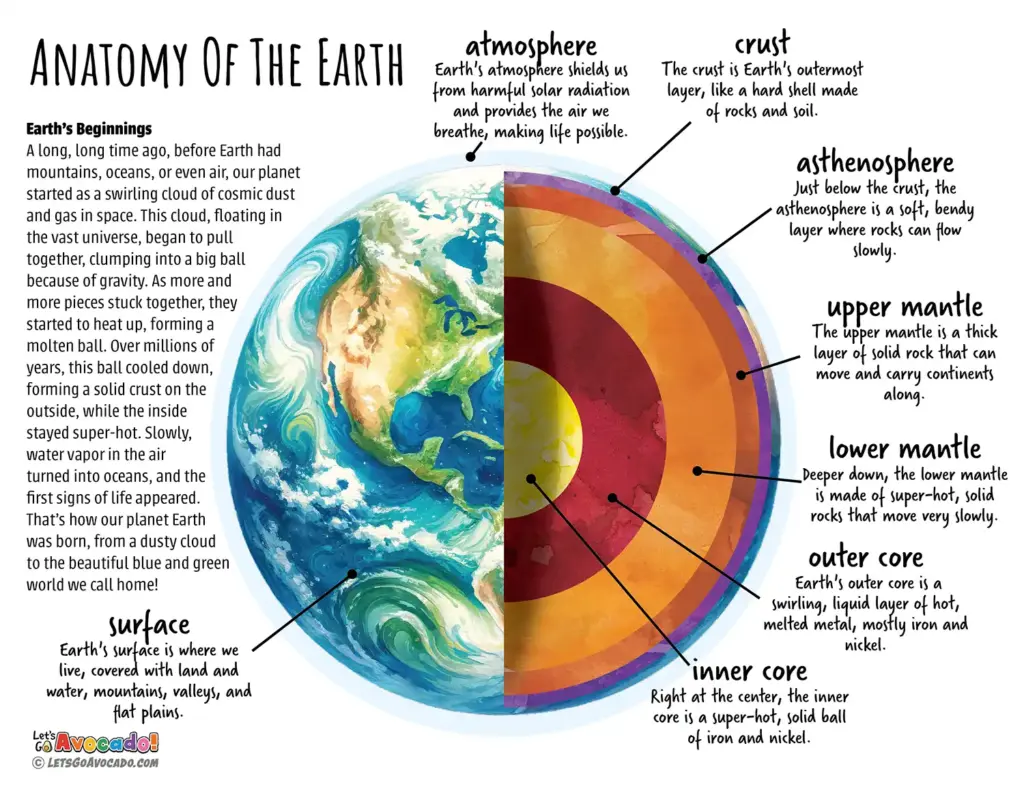
This anatomy poster is available in our Solar System Study Unit. Check our downloads section for more details.
The outer core of the Earth is made of very hot, melted metal, mostly iron and nickel. Because it’s so hot, this molten metal is in constant motion, moving around in swirling currents, much like water swirling in a pot when you stir it. These swirling movements are caused by the heat inside the Earth and the rotation of the planet.
As the molten metal moves, it creates electric currents, just like when electricity flows through wires in a circuit. You can think of it like a giant natural battery inside the Earth. When these electric currents flow, they generate a magnetic field around the Earth. This process of generating a magnetic field through the movement of molten metal is called the dynamo effectThe Dynamo Effect is the process by which the movement of molten metal in the Earth’s outer core generates electric currents, which in turn produce the Earth’s magnetic field..
The dynamo effect is what creates the Earth’s magnetic field. The constant swirling and movement of the molten metal in the outer core keep these electric currents going, which in turn keeps the magnetic field strong and stable. Without this movement, the magnetic field would weaken and eventually disappear, leaving the Earth without its protective shield.
How Does Earth's Magnetic Field Protect Us?
The Earth’s magnetic field is like a big, invisible shield that protects our planet. It keeps us safe from dangerous particles that come from space. These particles, called cosmic rays and solar wind, are tiny pieces of matter with a lot of energy. Cosmic rays come from outside our solar system, and solar wind comes from the sun.
If these particles reached the Earth’s surface, they could be harmful to living things, including people. They can damage our cells and even mess up our technology, like satellites and power systems. But the Earth’s magnetic field helps protect us by pushing most of these particles away.
The magnetic field guides these particles towards the North and South Poles, where they can safely enter the Earth’s atmosphere. This is why we see the Northern and Southern Lights, also known as auroras, in those areas. These lights happen when the particles from the solar wind hit gases in our atmosphere, causing them to glow.
By deflecting these harmful particles, the magnetic field keeps our planet’s atmosphere safe and protects all life on Earth. Without this magnetic shield, we would be exposed to more radiation, which could make it harder for plants, animals, and people to survive.
How Do We See the Effects of Earth's Magnetic Field?

One of the coolest effects of the Earth’s magnetic field is the auroras, also known as the Northern and Southern Lights. These are colorful light displays that appear in the sky near the North and South Poles. They happen when particles from the solar wind collide with gases in the Earth’s atmosphere, like oxygen and nitrogen. These collisions cause the gases to glow, creating beautiful waves of green, pink, red, and purple lights.
Fun Facts About Earth's Magnetic Field
North and South Poles: The Earth has a magnetic North Pole and a magnetic South Pole. These magnetic poles are not exactly in the same places as the geographic North and South Poles, which mark the top and bottom of the Earth, but they are close. The positions of the magnetic poles change over time because of shifts in the Earth’s magnetic field.
It Flips!: Sometimes, over many thousands of years, the Earth’s magnetic field flips, switching the North and South Poles. This is called a magnetic reversal. During a reversal, the strength of the magnetic field weakens before the poles swap places. Scientists believe these flips have happened many times in Earth’s history.
It Moves: The magnetic poles aren’t fixed; they move a little bit each year. This is known as polar wandering. For example, the magnetic North Pole is currently moving toward Siberia at a rate of about 10 kilometers per year. This movement means that navigational maps need to be updated regularly to reflect the changing magnetic field. Scientists keep track of the Earth’s magnetic poles as they move by using special tools. Satellites in space measure the Earth’s magnetic field, while observatories on the ground use instruments to watch how the field changes in different places. Sometimes, scientists do special surveys to get more detailed information. By putting all this information together, along with old records, they can see how the magnetic poles shift over time and learn more about why this happens.
FAQ: 10 Questions Kids Ask The Most About The Earth's Magnetic Field
What is a magnetic field?
A magnetic field is an invisible force around a magnet that can attract or repel other magnetic objects.How do magnets work?
Magnets work because they have a magnetic field around them. This field pulls certain metals like iron, nickel, and cobalt towards them.Why does a compass point north?
A compass points north because the needle inside it aligns with the Earth’s magnetic field, which has a magnetic North Pole.What causes the Earth’s magnetic field?
The Earth’s magnetic field is caused by the movement of molten iron in the Earth’s outer core. This movement creates electric currents, which generate the magnetic field.Can you see a magnetic field?
No, you can’t see a magnetic field, but you can see its effects, like when a compass needle moves or when magnets attract or repel each other.What are the magnetic poles?
The magnetic poles are the points at the ends of a magnet where the magnetic force is strongest. The Earth has a magnetic North Pole and a magnetic South Pole.Do other planets have magnetic fields?
Yes, some other planets, like Jupiter and Saturn, also have magnetic fields. They are created by similar processes inside those planets.Why do magnets sometimes repel each other?
Magnets repel each other when like poles (either two North Poles or two South Poles) are facing each other. Opposite poles (North and South) attract.What happens if you cut a magnet in half?
If you cut a magnet in half, each piece will still have a North and South Pole. You end up with two smaller magnets.Can living things be affected by magnetic fields?
Yes, some living things, like migratoryMigration is the regular movement of animals from one place to another, often to find food or better weather. It’s a seasonal trip that many animals take for survival. Learn More birds and sea turtles, can sense the Earth’s magnetic field and use it to help them navigate. However, most humans don’t notice magnetic fields in everyday life.
Discussion Guide for Parents
To help you and your child explore the fascinating world of Earth’s magnetic field, here are some discussion topics. These questions and ideas can spark interesting conversations and deepen understanding.
1. What Is a Magnetic Field?
Questions Parents Can Ask:
- What did you learn about magnetic fields?
- Can you describe how a magnet works?
Possibilities for Discussion:
- Talk about how a magnetic field is invisible but can affect things around it, like moving a compass needle. You can also discuss how magnets can attract some metals and how the Earth itself acts like a giant magnet. (Note – gravity is not related to this. The earth acts as a giant magnet because it has a magnetic field, not because of gravity)
2. The Earth’s Magnetic Field
Questions Parents Can Ask:
- What creates the Earth’s magnetic field?
- Why is the Earth’s magnetic field important?
Possibilities for Discussion:
- Explain the concept of the molten iron moving in the Earth’s outer core creating the magnetic field. Discuss how this magnetic field protects us from harmful particles from space and helps make life on Earth possible.
3. Using a Compass
Questions Parents Can Ask:
- How does a compass work?
- Why does the compass needle always point north?
Interestingly, the needle on a compass that points north is actually attracted to what would be considered the south pole of a magnet. This means that the Earth’s geographic North Pole is, in magnetic terms, actually the south pole of the Earth’s magnetic field. So, when we say “magnetic North Pole,” we’re actually referring to a spot that acts like the south pole of a magnet.
This can be a confusing concept, especially for younger kids, because it flips the usual idea of north and south. It’s an interesting fact that you can introduce to kids if they are ready to understand this tricky idea. It shows that the Earth behaves like a giant magnet, but with the poles reversed from what we might expect.
Possibilities for Discussion:
- Discuss how a compass needle aligns with the Earth’s magnetic field, pointing towards the magnetic North Pole. You can also talk about how explorers and hikers use compasses to find their way.
4. Magnetic Poles and Their Movement
Questions Parents Can Ask:
- What are the magnetic poles?
- Did you know that the magnetic poles move over time?
Possibilities for Discussion:
- Explain that the Earth’s magnetic North and South Poles are not fixed and move slightly every year. Discuss how scientists track these changes and why they happen.
5. The Northern and Southern Lights
Questions Parents Can Ask:
- What are the Northern and Southern Lights?
- How do they relate to the Earth’s magnetic field?
Possibilities for Discussion:
- Talk about how these beautiful lights are created when particles from the solar wind collide with gases in the Earth’s atmosphere near the poles. Discuss how this happens because of the Earth’s magnetic field directing these particles towards the poles, creating the colorful displays.

There’s a lot to explore right where we are, in our own neighborhoods and backyards! Join us while we get off the couch and explore the everyday wonders of nature, science, space, engineering, art, and anything else we stumble upon during on our adventures.


